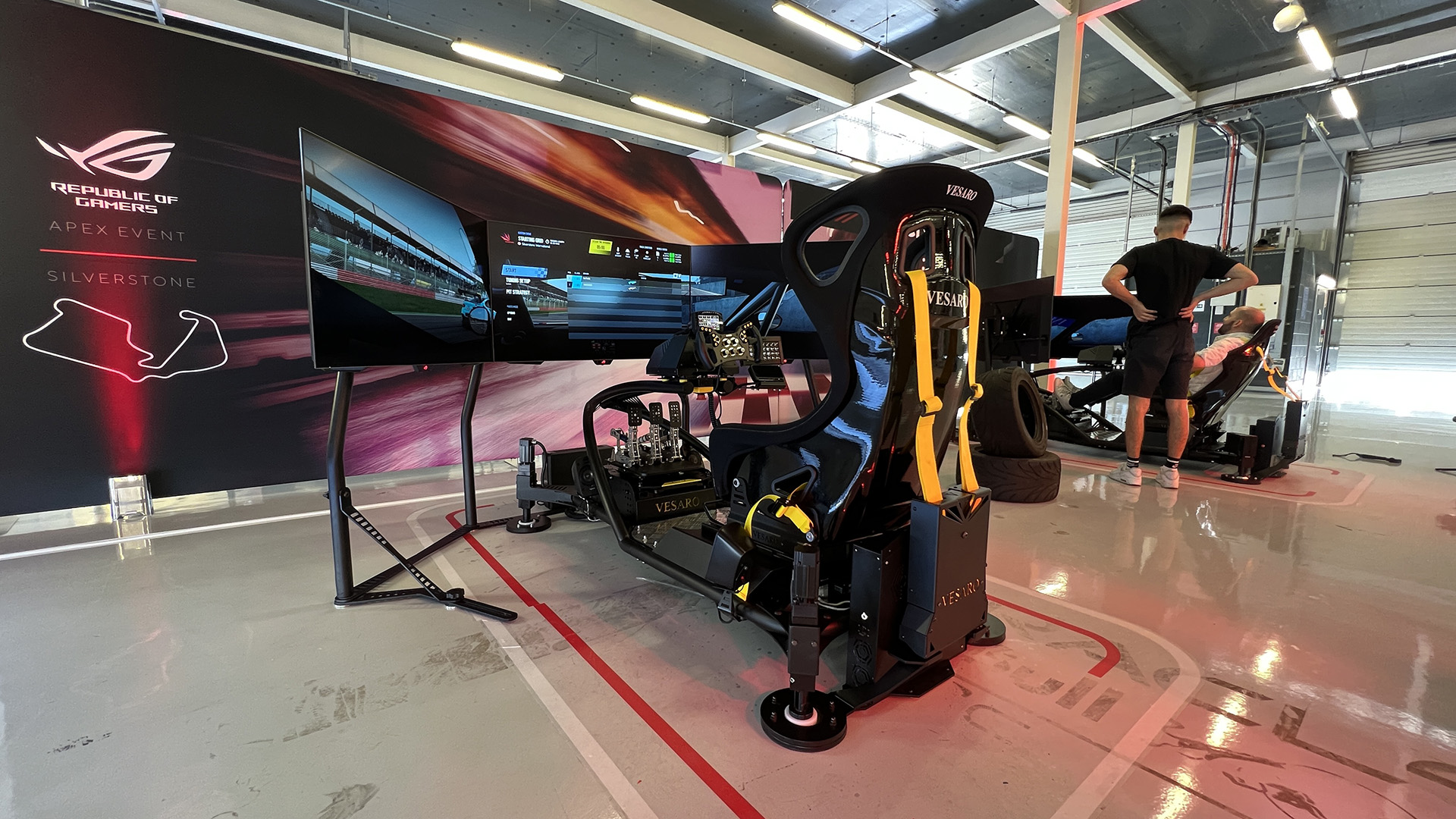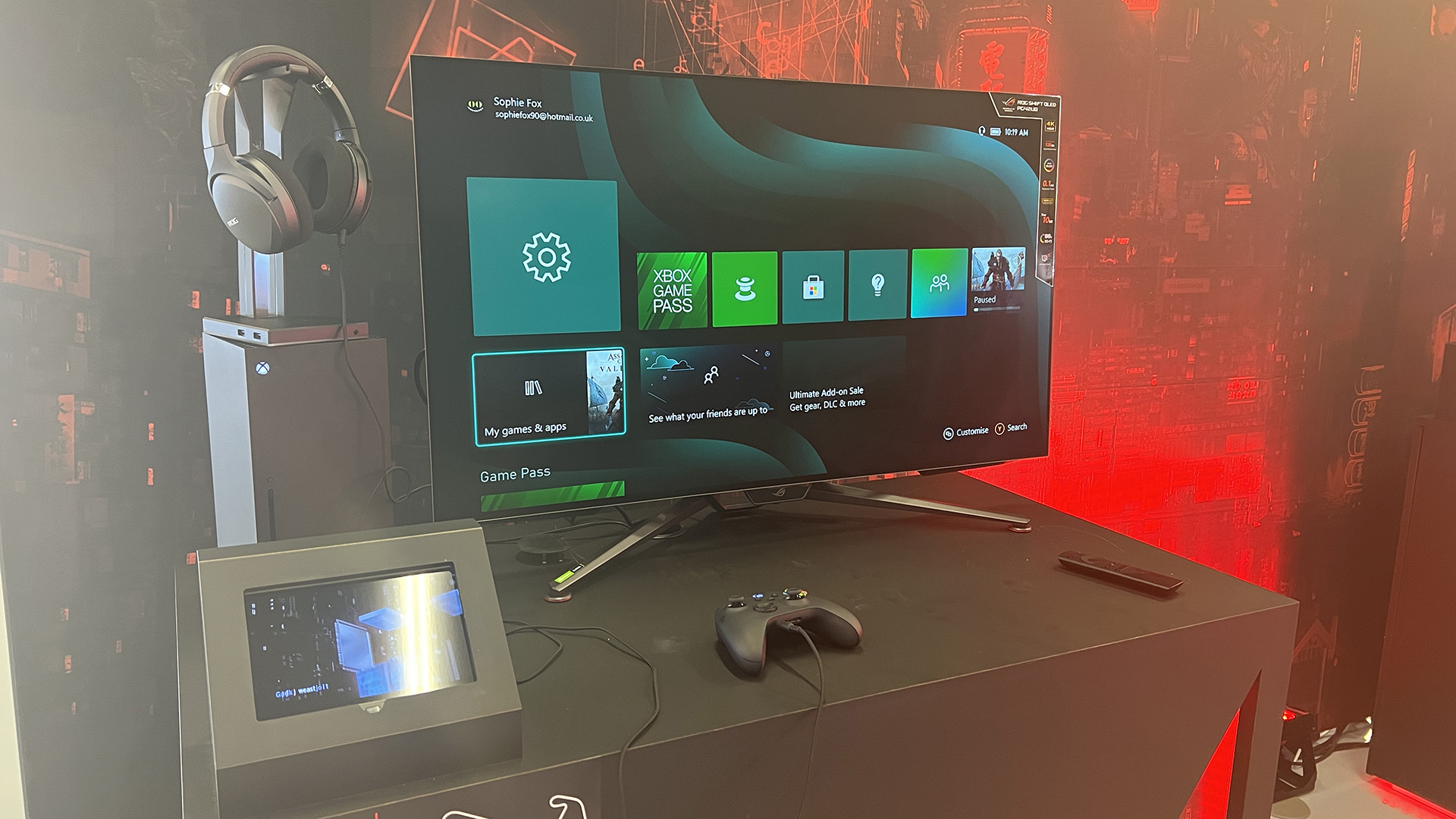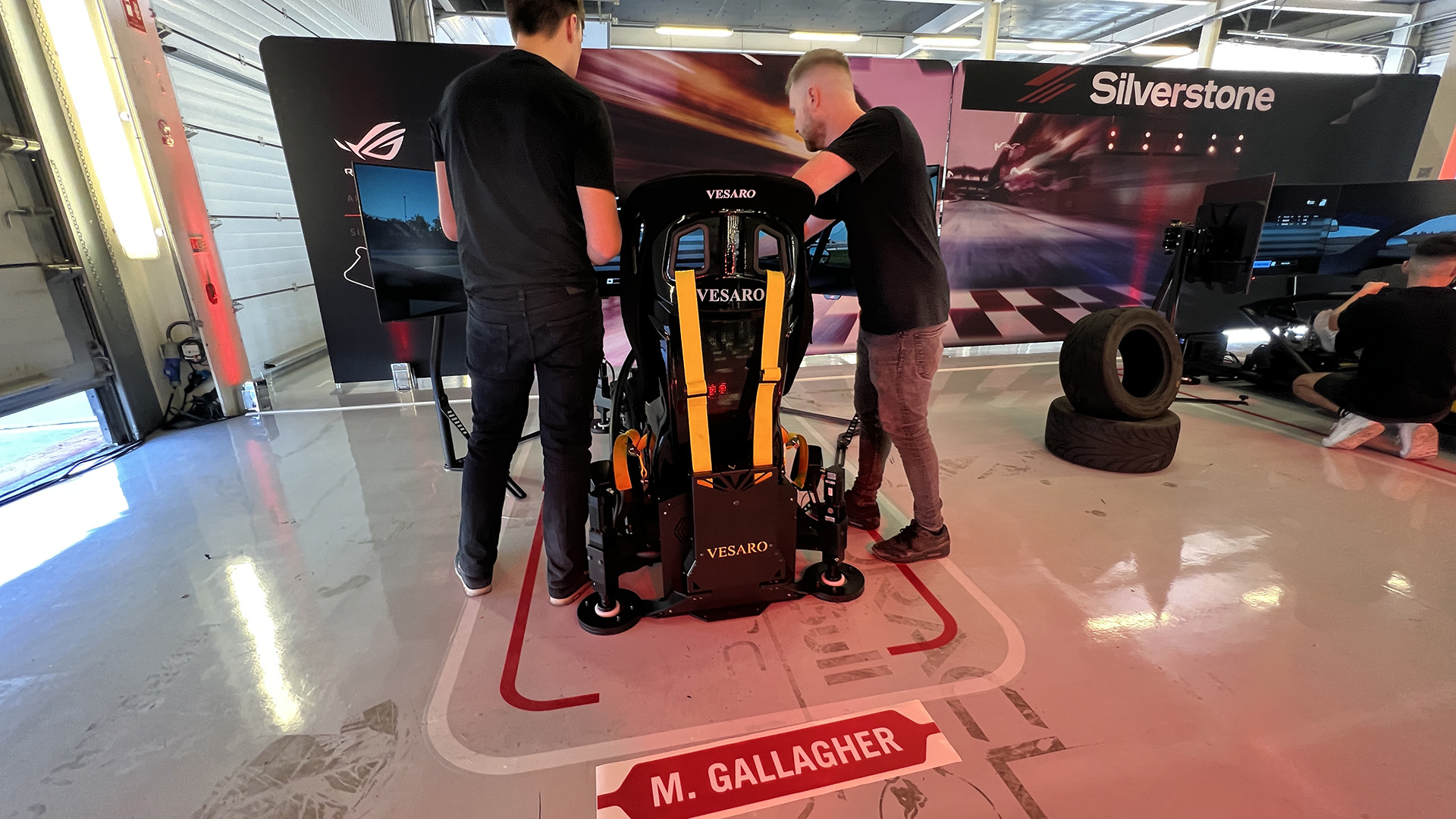

Racing simulator games have gotten extremely good in recent years, but sitting on your sofa with a game controller never really feels like you're driving. That's where racing chairs come in, and last week I got to try out one of the best in the business, created by Vesaro and Asus ROG.
Vesaro is a big name in advanced simulators. It builds modular systems for flight, helicopter and car sims, with some impressive Formula One-style sims that include a full sized car that are approved by the FIA for training.
Asus Republic of Gamers has just released its latest gaming monitors, which come in 42-inch and 48-inch sizes. These are 4K OLED screens with 138Hz refresh (120Hz on HDMI 2.1) and 0.1ms response times, for a next-level gaming experience, either on PC or console.
Asus has teamed up with Vesaro to create a new motorsport experience being installed in the One New Change centre in London. Each machine will use three of the Asus ROG 48-inch OLEDs for a wrap-around display and Vesaro's motion-controlled driving platform. To see just how good the setup is, I took a spin around the Silverstone circuit on the rig – and then went round the track in a real car, all in the name of science!

Asus ROG Swift PG48UQ OLED monitor
The new Asus ROG Swift monitors were originally announced at CES 2022. They are its first OLED monitors and some of the largest of their kind on the market. While you could just use an OLED TV for console gaming these Asus models are set up, especially for both PC and console use.
The Asus ROG Swift PG48UQ is the larger of the two at 47.5 inches, while the PG42UQ is still an impressive 41.5 inches. Aside from the dimensions, the two screens are otherwise identical.
The screens boast a 4k (3840x2160 pixel) resolution with a 16:9 aspect ratio. This delivers a 138Hz refresh rate via the Display Port 1.4 connection, or 120Hz via one of the two HDMI 2.1 ports for console users. There's a response time of 0.1ms for practically non-existent lag, G Sync and AMD FreeSync compatibility, HDR10, variable refresh rate and auto low latency mode.
Sign up to the T3 newsletter for smarter living straight to your inbox
Get all the latest news, reviews, deals and buying guides on gorgeous tech, home and active products from the T3 experts
In terms of ports, in addition to the DisplayPort and 2x HDMI 2.1, there's 2x HDMI 2.0, 4x USB 3.1, an optical digital out and a 3.5mm earphone out. There are Harmon Kardon stereo speakers built-in (10W tweeters plus 15W woofer) and a handy 1/4 inch tripod hole on the top, so you can mount a webcam or proper camera.
The displays look great with very thin bezels on all sides and have a five-way OSD joystick on the bottom for operation. There's also an included remote control. One of the key features for gaming use here is the large custom heat sync. This is designed to keep the units below 50 degrees Celsius to maintain the 800 nits peak brightness. There's also an aspect ratio control that allows you to resize to 24, 27 or 34-inch displays for closer use.
While the release date and price for these two monitors are still TBC, I expect more info later this month. Educated guesses on price seem to be in the region of £1400-1500 ($1500-1800).
ROG Delta S Wireless headset
In addition to the two monitors, Asus also demonstrated its new Delta S wireless headset. These offer dual wireless connections (2.4Hz + Bluetooth), AI beam-forming microphones built in to the earcups, and 25 hours of battery life. The fast charging also allows for three hours of use with just a 15-minute charge.
Vesaro gaming simulator
The Vesaro simulators are no ordinary racing chairs. While its range does cover everything from a standard self-assembly kit for you to add your own console and screen (for just a snip under £1000), the model I tried was from its professional range.
While the kits are completely customisable, this model is based on the Vesaro Professional Stage 4 model, which retails at nearly £51k. This includes a triple-screen display (three Asus ROG Swift PG48UQ's in this case), a Corbeau Revolution X Excel Carbon Racing Seat with G-Force Tensioner System and a 3-inches of motion from each corner of the Vesaro Quad Motion 3.0 system.
It's all powered by a custom Vesaro PC and was set up to run Project Cars 2 for my test run. And as I was doing the test in the pit lanes of the Silverstone circuit, it was that circuit I was to take on the game.

How it performed
Sitting in the simulator feels as distant from your standard driving game on a PC or console as you can get. The combination of the proper racing chair, the steering wheel and the pedals puts you in a more traditional driving stance and one that felt almost identical to being sat in a real car.
The triplet of Asus ROG OLED displays looked stunning, the limitation being more on that of Project Cars 2. I'd have loved to see GT7 or Forza Horizon 5 on these screens as i'm sure they would have really showed off the monitor's capabilities.
The most impressive part of this set up, though, has to be the motion. The biggest difference between its simulator models, one of the Vesaro team told me, is the amount of motion that they offer. This can range from a 1.5-inch to a 6-inch motion per corner. The 3-inch movement here was more than enough to give you that real track experience and the G-Force tensioner system built into the harness, really helps give that feel of acceleration.
How did it compare to the real track? Judging by the lap times put in by the professional drivers compared to mine, real racing acumen is useful in the simulator too, and having proper steering wheels and pedals makes it an accurate driving experience. The biggest difference however remains the fear factor. I was never worried while careering off the track at 150mph on the game, yet entering a corner at the same speed in a real Ferarri F430, left me worried about doing some real damage – especially to the car.
The other downside is that now, I only ever want to play a racing sim while sat in one of these Vesaro x Asus setups.
As T3's Editor-in-Chief, Mat Gallagher has his finger on the pulse for the latest advances in technology. He has written about technology since 2003 and after stints in Beijing, Hong Kong and Chicago is now based in the UK. He’s a true lover of gadgets, but especially anything that involves cameras, Apple, electric cars, musical instruments or travel.
-
 3 overrated shoulder exercises, according to a fitness expert (and what to do instead)
3 overrated shoulder exercises, according to a fitness expert (and what to do instead)Sculpt 3D shoulders whilst minimising injury with these three alternative exercises
By Bryony Firth-Bernard Published
-
 Polar’s new subscription feature lands in the shadow of Garmin’s Connect+ rollout
Polar’s new subscription feature lands in the shadow of Garmin’s Connect+ rolloutPR genius or timing disaster? Polar’s new Fitness Programme adds adaptive training to its ecosystem
By Matt Kollat Published